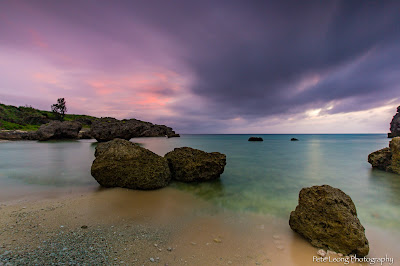Camping on the wrong island
Recently took another trip over to the Kerama island chain to camp on Zamami island again. Its a beautiful little island with some of the clearest ocean waters in the world and quite famous for snorkeling and diving. However our trip saw us not on Zamami island but on its neighbour island Tokashiki. Why I hear you ask? Well while I was waiting in the car someone said they would go get the tickets for the boat. So we got on the boat and arrived at Tokashiki. We just waited as everyone else disembarked from the large ferry until eventually one of the boats staff asked us "why aren't you getting off?" I replied " No we are going to the next island, Zamami. He looked at me puzzled and said "No this boat only goes to this island, Tokashiki! And so we ended up camping there for the night.
Tokashiki Island belongs to the Kerama Island group which are known for the world's most transparent emerald green waters (50-60m transparency). Those islands are also known as one of the world's best diving destinations, having a number of coral species and marine lives as large as those in the Great Barrier Reef. (Over 400 types of corals, 5 types of sea turtles, manta rays, whale sharks and all kinds of tropical fish species all live around Okinawa.)
We found a pretty nice camping area by the beach and made our camp there before making a bee line straight for the beach and snorkeling. The beaches here make even the beautiful beaches of Okinawa main island look like mud. They are just on another level altogether.
I had fun playing around with the Canon S95 and Canon underwater housing for it. Although I was experiencing difficulty with the lens section of the housing continuously fogging up due to the extreme changes in temperature I expect.
As night fell there was not a cloud to be seen in the sky which made for a beautiful star filled sky with the Milky Way also perfectly visible. So I set off to some various locations on the beach to try some star trail photography.
Made from about 100 or so 30 second exposures then combined using the free
StarTrails software availible from Startrails.de
StarTrails software availible from Startrails.de
I was shooting with both the Canon 7D and 5DmkII so as I could capture different angles and also experiment to see which is a better technique for capturing the stars, one single long exposure or many 30 second exposures combined in software afterwards.
It turned out that the single exposures were too prone to noise issues. The 30 second stacks had almost zero noise but still suffered from some "hot pixels", a phenomenon that causes certain pixel sites on the cameras sensor to heat up creating little red dots in the image.
I was then up early to shoot sunrise photos the next day before doing some more snorkeling at a different beach with turtles, a better variety of fish and crystal clear waters.
One of my favorite kind of underwater images is the half above half below shot. But this is quite tricky unless you have a nice big front element on the front of the underwater housing. I found this pretty difficult though with the smaller front elements on the housings designed for small compact cameras like the S95. I did manage to pull off a few I was pretty happy with though so I was happy. Here are a few more images and a short video I made with the Canon S95 while snorkeling.
At the entrance to one of the beaches. Inviting isn't it?
I made this image from within a hidden cave I happened across.
As the sun sets
Jenna just enjoying bobbing around in the calm clear waters.
This is a single exposure star trail. The exposure time was probably close to 1 hour. But even with the built in auto noise reduction the image still suffers from sever noise issues before using noise reduction in Lightroom.





Comments
If you do make it out to Zamami give me a heads up - would love to meet you!